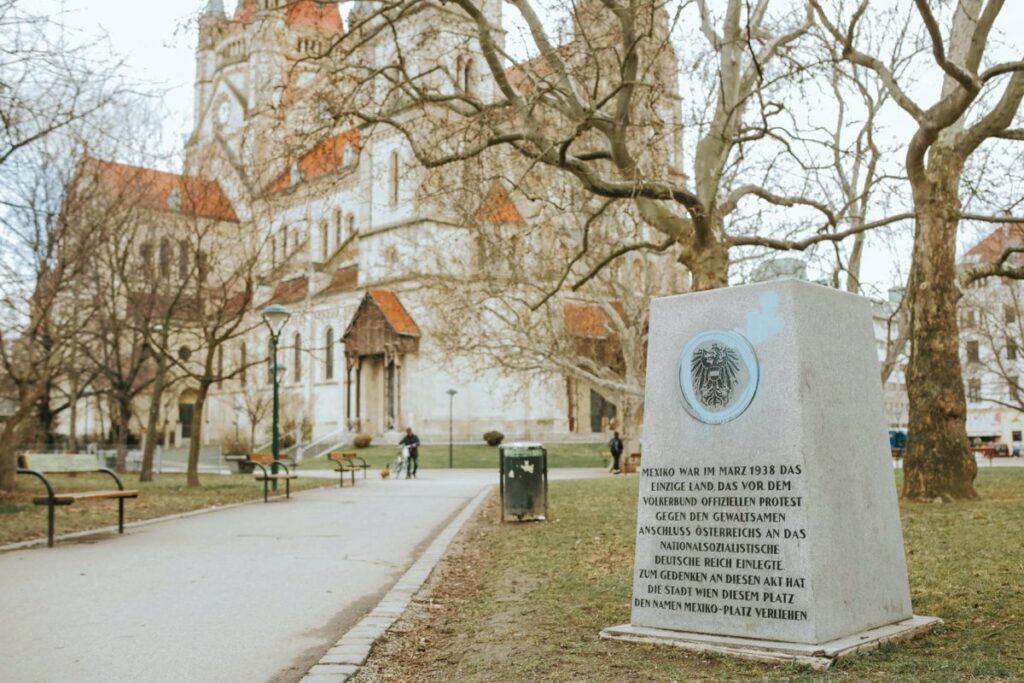During Adolf Hitler’s horrendous fascist reign, Nazi Germany prioritized increasing its territory to strengthen Nazi support and promote anti-Semitism. One of the many vulnerable victims of the Nazi takeover was Austria, whose people welcomed the Nazi Army with no opposition.
A square in Vienna entitled the Mexikoplatz commemorates the Mexican Republic’s admirable resistance to the Nazi invasion of Austria, opposing the expanding of Nazi rule as it signified a direct attack on international law.
The Anschluss Österreichs
The diplomacy between Austria and Mexico has existed since 1842, subsequent to the approval of both countries to the Friendship, Navigation, and Commerce treaty.
The most significant event in the Austria-Mexico Relations began when the Nazis started to invade Austria. During the League of Nations in 1938, Mexico had been the only country to oppose the Anschluss Österreichs in Austria.
The Anschluss is the Nazis’ invasion or annexation of Austria. During these times, Austria had an oppressive and fascist state, and since 1933, support for the Nazis increased over time. Four years before Mexico opposed the Anschluss, the Nazis had already attempted to invade and form Nazi rule with the assassination of Engelbert Dollfuss, an Austrian chancellor. The plan of the Nazis was unsuccessful as Kurt von Schuschnigg took the place of Dollfuss as chancellor, and the political reign of Kurt von Schuschnigg depended heavily on gaining aid from fascist Italy.
The masses of Austria supported the concept of the union of Nazi Germany and Austria, which was favorable for the Nazis as they wanted to enlarge their territory as much as possible. Austria soon became progressively prone to Nazi takeover due to the relationship of Italy and Germany becoming more compact. (Source: The Wiener Holocaust Library)
On the twelfth day of March 1938, German Armies entered Austria with seemingly nonexistent opposition coming from the people of Austria. The following day, Adolf Hitler requested the annexation of Austria, and the formal approval from the parliament of Austria came quick, making Austria a territory of Germany. (Source: Facing History and Ourselves)
Days continued to pass, and when March 19 came, it brought along Isidro Fabela, the Secretary of Foreign Affairs in Mexico. During the League of Nations in Geneva, Fabela presented a formal protest authorized by President Lázaro Cárdenas, which denounced the Nazi Germany invasion of Austria and implied that Austria’s annexation was a direct attack on the Covenant of the League of Nations and the principles of international law. (Source: Mas Mexico)
The Commemoration of Mexican Opposition
Within the boundaries of Austria, there is a place called Plaza de México, or Mexikoplatz in the German language, that honors Mexico’s brave resistance towards Nazi Germany in the Anschluss in 1938. Mexikoplatz, located in Handelskai near the Danube River, is one of the lengthiest streets in Austria itself.
As seen in historical studies, the establishment of Mexikoplatz began between 1868 and 1975. The site took on many previous names before settling on Mexikoplatz, like the Plaza del Archiduque Carlos or the Plaza de la Milicia.
The name of Mexikoplatz became final in 1956 when Mexico became the only country to oppose the Nazi takeover of Austria.
In March 1938, Mexico was the only country that officially protested to the society of nations over the violent annexation of Austria to National Socialist Germany. In tribute to that act, the city of Vienna gave the name of Mexico to this square.
A Stone Monument in Mexikoplatz
(Source: Mas Mexico)
